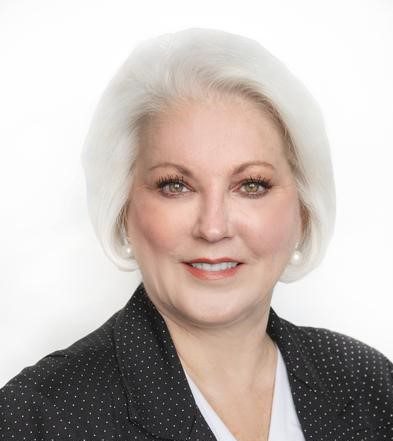Abstract
Operational excellence as a concept has been around for several decades and has changed the foundation of the business industry. Many industries have been using operational excellence to improve efficiency, decrease costs, and produce products of higher quality. The aim of this paper is to provide a brief overview of operational excellence, discuss how it relates to the veterinary industry, and provide practical steps for veterinarians and clinics to incorporate operational excellence in their everyday responsibilities.
Introduction
The notion of operational excellence first came into existence in Discipline of Market Leaders by Michael Treacy and Fred Wiersema[1]. The concept soon spread across the business realm through multiple industries, and this philosophy has been adapted and molded by numerous people and organizations over the years. Defining operational excellence can be a difficult undertaking, though, because there are varying definitions from diverse sources. For example, the Institute for Operational Excellence (IOE) defines operational excellence as the following: “Each and every employee can see the flow of value to the customer and fix that flow before it breaks down[2].” On the other hand, IBM defines operational excellence as “an approach to business management that emphasizes continuous improvement across all aspects of the business and within all business processes by creating a culture where management and employees are invested in business outcomes and empowered to implement change[3].”
To successfully achieve operational excellence, having a clear definition for a business or organization is important— one that everyone involved in the operation can understand and apply. Plus, the foundation of the definition must focus on continual improvement, which sets the stage that operational excellence is a constantly evolving journey. A company striving for continual improvement should identify desired improvements, implement necessary changes, and maintain those changes. Then, they must monitor the results of the implemented changes to ensure that their results stay consistent.
Operational excellence and continuous improvement are intertwined, but it is important to understand the difference between these two terms. So, what is the difference? First, the terms are on a continuum with operational excellence taking continuous improvement to the next level. Beyond that, the differences can be captured in two words: destination and direction. Continuous improvement is beneficial but, with a clear destination and appropriate direction, the company can produce results more quickly. So, the whole team should understand the changes they are making and the intended results, and they should also know where the company wants to end up. A good analogy is a captain and his ship with sailors aboard. The captain is the one person onboard the ship who knows where the destination is, how to get there, and how each part of the ship works. Unfortunately, sometimes the ship malfunctions, and conflict arises. At these times, the captain must solve the problem and, while doing so, he is not directing the ship. With operational excellence, the goal is to empower the sailors (employees) to solve the problems so the captain (management) can focus on arriving at the desired destination.
To achieve operational excellence, multiple methodologies have emerged. Each of these methodologies has varied core principles but share similar goals. Lean manufacturing was first constructed in the early 1900s by W.F. Taylor and Henry Ford[4], and this concept brought forth the invention of the assembly line. The assembly line allowed the companies to produce products at incredible speed. However, it was soon evident that this system became rigid and outdated. This sparked further development of constant renewal, which led to the concepts of Six Sigma, Kaizen, and Shingo. Through these concepts, purpose and principle governed the transformation of a company’s culture to produce the target results and business growth. All these different models have their own strengths and weaknesses, but each one strives to improve efficiency to improve production and customer satisfaction.
The Industries
Thus far, this paper has focused on defining and understanding what operational excellence is. The next step is to take that knowledge and see how it applies to various modern industries. As previously discussed, operational excellence is a powerful instrument for business organizations, especially in the manufacturing and automobile industries. In fact, in their 2020 survey, IOE stated that the manufacturing industry contained the largest group of respondents. That same survey reported that most respondents using operational excellence were from companies with $1 billion or more in revenue with 75 percent of respondents working in large companies. Almost 20 percent of the respondents worked in companies with more than 10,000 fulltime employees[5]. Certainly, operational excellence has specific industries and company sizes and revenues where it is more utilized.
IBISWorld Reports analyzed seven hundred U.S. industries identified by the North American Industry Classification System. According to an IBISWorld Report that analyzed and projected employment statistics from 2004–2029, the veterinary service industry employed 455,189 people in 2023; the average veterinary business employs 7.9 employees. In addition, the veterinary medicine is ranked the 85th largest industry in the U.S.[6]. From this data, one can determine that the veterinary medicine industry is a comparably smaller industry than the large manufacturing companies that are currently utilizing operational excellence. Therefore, a large manufacturing plant can use operational excellence on a completely different level than a vet practice with fifteen employees.
The AVMA Vet Industry Tracker provides data collected from VetSource about the current trends in the veterinary medicine industry. This data tracked the revenue of 5,054 vet clinics[7]. Trends from this source indicated that veterinary clinics were selling fewer products and providing more services. Unlike manufacturing plants that must provide a steady product, the veterinary industry provides services on a patient-by-patient basis. As a result, operational excellence will have a different role in veterinary medicine than the traditional manufacturing plant.
The question, then, is whether operational excellence, being so influential in large manufacturing corporations, can be adapted to be effective in a service-based industry like veterinary medicine. Veterinary practices not only have to provide gold standard patient care, but they must also serve the client. Unlike manufacturing factories with predictable machines, both animals and people can represent relatively unpredictable variables. As a result, operating a veterinary practice can feel like constantly treading water. Veterinary practices are constantly working hard to create and manage a stable environment for growth. Fortunately, operational excellence can allow clinics to define their management styles, involve their staff, and achieve business goals. The rest of this paper focuses on tangible steps that veterinary practices can use to better manage their clinics to take them to the next level.
Roadmap to Operational Excellence
The IOE developed eight principles to incorporate operational excellence into any business entity. This section will highlight each principle and discuss steps that the veterinary industry can use to accomplish these principles to advance the practice and move it to the desired destination.
Principle 1: Design Lean Value Streams
The focus of this principle is the formation of streams within the business. The IOE highlights the importance of a company to lay out, from start to finish, the production of a product or service. (A company with multiple products can group related products together.) This process helps the team to fully understand the whole operation. After the business establishes these streamlines, it can then generate new design systems to allow for improved efficiency—and the veterinary industry can certainly use this principle. Each practice should start by writing down all its services, dividing them into similar groups like surgical procedures, diagnostic tests, or dental care. After that, the practice will need to describe the processes associated with each service and all that it encompasses. For surgery, it would include pre-surgical, surgical, and post-surgical aspects, including pre-anesthetic bloodwork, equipment maintenance, and post-op recovery. This would allow the practice to identify what services offer the most return on investment and what services need improvement. Moreover, by having a better understanding of the services provided, clients will have clearer expectations when they walk through the door. Once these streams are outlined, the practice could then create and adapt these service streams for better efficiency.
Principle 2: Making Lean Value Streams Flow
This second principle is associated with implementing the changes developed in the first principle, a process that won’t happen overnight. Educating staff will be critical to ensure that the new design process will be implemented correctly. Every team member should know what the new production design is and why it was changed in addition to what the expected results will be and what the intended goals are. After everyone has been thoroughly debriefed, actionable steps must be taken to apply the new design. This could include written steps for employees and changing the production layout to bring new processes to life. Veterinary practices can incorporate this principle in their everyday tasks. At staff meetings, instructions for the new design can be explained and displayed. In addition, guidelines can be written and posted for all staff members to see. Lastly, individual team members can be selected to head these new designs so that, if anyone has questions, they have guidelines and people to turn to.
Principle 3: Make Flow Visual
The IOE believes that, to achieve operational excellence, every team member should be able to visualize the flow of the design. All employees should be able to identify the flow of the designs, how they relate to one another, and how they relate to customers. The IOE highlights two types of visualization: static and dynamic. Static visualization is the normal outcome produced by the flow design. Dynamic visualization is the status of the day-to-day flow design. This principle brings into account the how and the why. A clear company mission and its purpose for the surrounding community are critical for operational success. For clients to see the grand mission of the business, the employees must first see it and believe in it. Great veterinary practices not only play a big part in society but are also highly integrated within the community. The flow design should give employees a picture in their mind of how services will impact both the patient and client. This consistent visualization of the flow allows for continual adaptation for each case that comes through the door. Being conscious of this allows the staff to better prepare clients on what to expect at an often-unpredictable vet clinic. As a result, the clinic is more consistent, and clients can walk through the front door knowing what to anticipate. Customer satisfaction is one of the best benefits that operational excellence has to offer.
Principle 4: Create Standard Work for Flow
The goal is for every employee to understand what tasks need to be completed at the correct time. This principle focuses on standardizing the flow design and generating steps to make the flow efficient. The endpoint is reduced variability and an easily repeatable flow. This is particularly useful and easily applied to certain industries like manufacturing. The veterinary medicine industry, though, consists of animals and people—both of which can be unpredictable. This can make standardized work more difficult. For that reason, veterinary practices must pinpoint the tasks they can standardize. For example, diagnostic tests, paperwork, clean up, and communications are all areas where a clinic can create standardized tasks. In addition, every clinic has its own way of doing things like every doctor has a unique style. A clinic should have manuals for all the services that describe how to conduct those services in detail. Then, when they hire new employees, they can refer to training manuals and spend less time on training. A simple example is the workflow associated with ear cytology. There are numerous ways to correctly sample and prepare an ear cytology. Practices should have their preferred methods so the doctor can read the ear cytology, produce a diagnosis, and prepare prescriptions more quickly. To ensure this principle is fully achieved, all members of the team should be a part of the newly standardized process. This will allow the clinic to collect the necessary data to create standardized tasks and ensure all employees feel they are a part of the process.
Principle 5: Make Abnormal Flow Visual
Thus far, the principles have talked about the normal flow of a business. Realistically, though, abnormal flow will be a daily concern for many businesses. Therefore, this idea calls attention to the time wasted by management to control abnormal flow with the IOE suggesting that all members be taught how to identify it. As a result, the situation can be recognized and resolved earlier. Start by questioning if production is meeting customer demand. A company can go even further by checking each step of the process to see if production is flowing at the proper rate. The goal would be for all staff to have the capacity to both visualize and correct abnormal flow on the spot. This principle is tailor made for the veterinary medicine industry due to the diverse clientele they deal with daily. When a client comes to your practice, they meet a portion of your team. They check in with the receptionist, speak with the veterinary technician, and then meet with the veterinarian. So, here are plenty of steps and transitions between staff. It is therefore important that a practice uses a flow system to make these transitions smoother for the client and between co-workers. Once identified, all team members have the power to step in, follow the guidelines, and work together to solve the present issue.
Principle 6: Create Standard Work for Abnormal Flow
This principle takes the previous one further. Not only can staff recognize abnormal flow, but they can also correct it efficiently. The IOE wants to remove as much back and forth from production and management as possible. The more time that staff needs assistance in the event of a breakdown, the more production decreases, and management has less time to operate and grow the company. To effectively achieve this principle, management must create a list of past historical breakdowns. The IOE suggests writing a top ten list, and management can generate a report that clearly explains how to resolve those specific issues. Then, the next time that a breakdown occurs, management is less likely to be looped in because the problem already has a potential solution outlined. This is certainly appliable to the veterinary industry. On the medicinal side of things, the medical director typically outlines the clinic’s policy on specific issues. As a result, when one of those issues arise, the staff can follow protocol. This principle encourages practices to develop a master game plan to conquer as many obstacles as possible.
Principle 7: Have Employees in the Flow to Improve the Flow
By this point, employees should have a better understanding of the overall mission of the company while having a better understanding of the ins and outs of the production flow. The staff are on the front lines and see the entire process up close. As a result, they have the knowledge and power to adjust and improve the flow. This principle highlights operational excellence as the goal of continuous improvement as the team molds the flow into a powerful tool unique to their practice. Ideas for improvement are often quickly gone so, to capture them, the practice could designate a board or meeting that allows staff to share those ideas.
Principle 8: Perform Offensive Activities
This principle pulls together all the previous ones and the foundation of operation excellence to create business growth. Once the flow is stable, it is time to let it run independently. Team members can effectively conduct the flow and keep it going if anything breaks down in a self-sustaining manner. As a result, the company can focus on expanding and fulfilling its mission while the manager has more time to work on the financials required to bring in more cash flow. Then, the clinic expands. This, then, is the goal for veterinary practices: to give management the time to structure the practice in a way for success.
Conclusions
Operational excellence is important for business management. Many industries use the core foundations of operational excellence to continually provide exceptional production and improve customer satisfaction. Likewise, the veterinary industry can benefit from the tools and principles of operational excellence. With these steps, veterinary practices can provide better medical care to their patients and services for their clients.
References:
Anninos, L.N. (2007). The Archetype of Excellence in Universities and TQM. Journal of Management History, 13(4), 337-32.
AVMA Veterinary Industry Tracker. Practice Pulse newsletter. Data trends from veterinary practices. https://www.avma.org/resources-tools/veterinary-economics/veterinary-industry-tracker
Čiarnienė, R. and Vienažindienė, M., 2012. Lean manufacturing: theory and practice. Economics and management, 17(2), pp.726-732.
Found P, et al. Towards a Theory of Operational Excellence. Total Quality Management & Business Excellence. 2018 Jun 21:29(9-10): 1012-1024. https://doi.org/10.1080/14783363.2018.1486544
IBIS World Report. Veterinary Services in the US – Employment Statistics 2004–2029. https://www.ibisworld.com/industry-statistics/employment/veterinary-services-united-states/
Institute for Operational Excellence. What is Operational Excellence? Rhode Island; 2012What is Operational Excellence? https://instituteopex.org/what-is-operational-excellence/
Institute for Operational Excellence. 2020 Survey.
IBM Cloud Education. What is Operational Excellence? https://www.ibm.com/blog/delivering-value-through-operational-excellence/
Miller R. The Shingo Model Handbook for Operational Excellence; 2014. (Available at: http://lean.nh.gov/documents/Shingo%20Model%20Handbook.pdf . last accessed on 03/06/2016)
Naftanaila I, Radu C, Cioana G. Operational Excellence – A Key to World-class Business Performances. Studies in Business and Economics; 2013.p. 133 – 140.
Rusev, S, Salonitis, K. 2016. Operational excellence assessment framework for manufacturing companies. Procedia CIRP 55:272 – 277.
[1] Found P, et al. Towards a Theory of Operational Excellence. Total Quality Management & Business Excellence. 2018 Jun 21:29(9-10): 1012-1024. https://doi.org/10.1080/14783363.2018.1486544
[2] Institute for Operational Excellence. What is Operational Excellence? Rhode Island; 2012What is Operational Excellence? https://instituteopex.org/what-is-operational-excellence/
[3] IBM article
[4] Čiarnienė, R. and Vienažindienė, M., 2012. Lean manufacturing: theory and practice. Economics and management, 17(2), pp.726-732.
[5] Institute for Operational Excellence. What is Operational Excellence? Rhode Island; 2012What is Operational Excellence? https://instituteopex.org/what-is-operational-excellence/
[6] IBIS World reports
[7] AVMA Vet Industry Tracker









